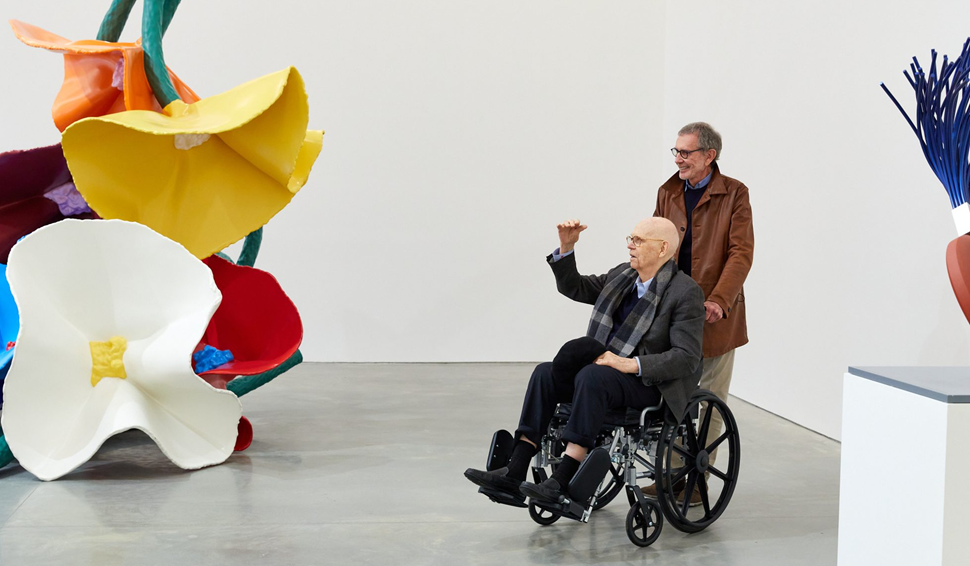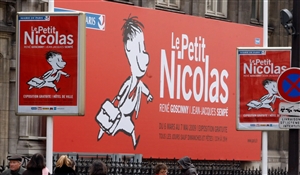On the Occasion of Claes Oldenburg's Death, Creator of Giant Sculptures Made of Everyday Objects
20 Jul 2022Original text in Farsi by Safoora Seyedi
Translated to English by Parichehr Ghanami
This week, Claes Oldenburg passed away at the age of 93. He fell, according to Pace Gallery. While he is known as a Pop artist, he insisted it's unfair to compare him to Warhol. An interview with Oldenburg in the Los Angeles Times in 1995 stated that he did not understand how people attributed Pop art to him. Using daily objects, he created large-scale sculptures and displayed them outside of the gallery and museum; An upside-down binocular on the street, a badminton ball that appears to have grown from the ground, and an abandoned clothespin on a shopping center corner. Oldenburg desecrates the art object. In his choice of art object content and display scene, this fact is evident. As for Oldenburg's choice of public space, he opted for public parks, offices, and universities.

In our view, Oldenburg is distinguished by the origin of his art; he is an immigrant from Sweden, who moved with his family to Chicago at the age of seven. It was the language barrier that convinced the young Oldenburg to create images rather than words. Immigrants were encountered with coldness and distance by American society, contrary to what it claims. Oldenburg understood this and began creating other worlds to escape isolation. The Los Angeles Times interview is an intimate and friendly confession to America's unkind society; Out of the house, young Oldenburg and his brother had no chance of being understood. To escape loneliness, they created an imaginary world filled with plenty of details. Young brothers' friends were daily home objects; father's binoculars, badminton ball, and clothespin abandoned in the laundry room corner.
Another significant point of the Los Angeles Times interview is that the artist told how much he missed drawing old objects. A lot of his giant sculptures are old electronic tools used in everyday life. The vacuum cleaner image cut out of an American magazine by Oldenburg's grandmother now sits as a sculpture in the city's corner. He did not miss the past, but emphasized the importance of daily objects.
The first time Oldenburg encountered daily objects as art objects in adulthood was when he was employed at the City News Bureau of Chicago as a reporter intern. In his youth, writing was a symbol of innovation as compared to creative art. He studied literature and was fascinated by report writing.
There, he first observed a man collecting screws and beads. Oldenburg confessed that at that time he thought the poor man is alone, but later he realized a daily object can be an art object and a man collecting beads adds meaning to daily objects. An implicit and personal meaning specific to its creator; collecting as a kind of installation. Just like childhood, just like grandmother's vacuum cleaner image and clothespin abandoned in the laundry room corner. Toward the end of the interview, Oldenburg said: "I wanted to present my art to audiences outside of museums and galleries, in the middle of their everyday lived experiences, just as I experienced myself. Seems like it was a success."
Sources:
- www.latimes.com/archives/la-xpm-1995-07-02-ca-19310-story.html
- www.washingtonpost.com/obituaries/2022/07/18/artist-claes-oldenburg-dead/
- www.nytimes.com/2017/10/16/t-magazine/claes-oldenburg.html?fbclid=IwAR0Fn-fYih4ODEtcMbPg-jTsfpTl_Z5ZE1Sfo05Q1aarpTmwbyEkqrwQKXY
Cover and slider image:
- www.hyperallergic.com






